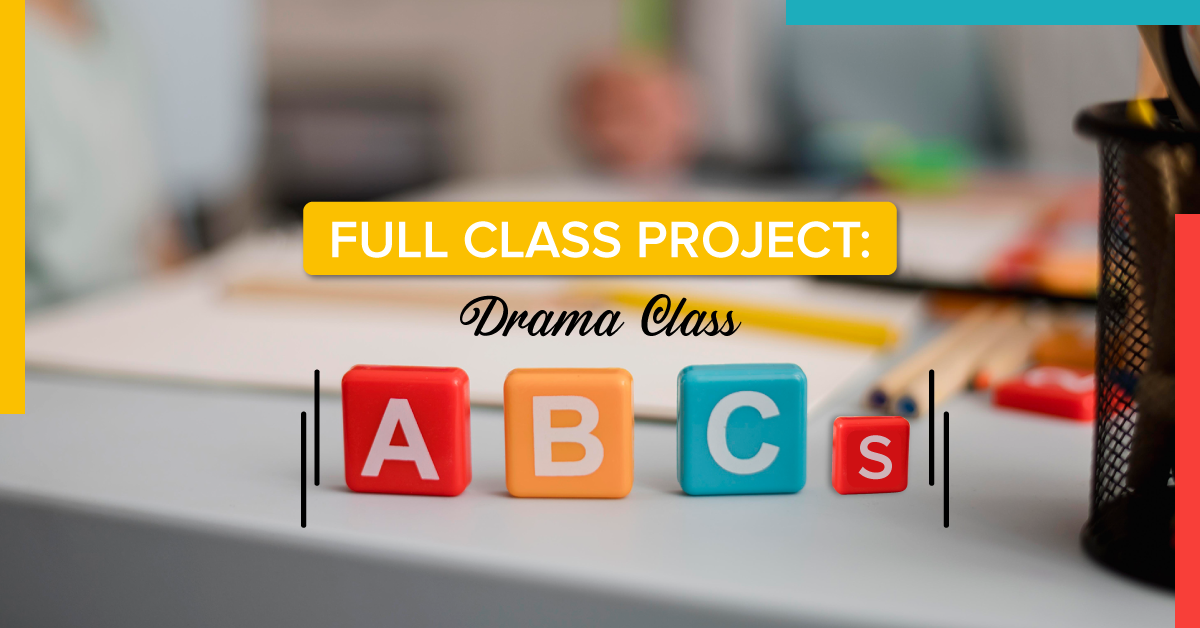Full Class Project: Drama Class ABCs
In “Drama Class ABCs,” students work together as a class to create a children’s alphabet book of important theatre-related words and phrases. This project can be done in person or virtually. It challenges students to select and define 26 important theatrical vocabulary words and phrases, and explain those words and phrases in simple language that young children or non-drama students would understand.
Materials Needed:
- If you’re making a physical book, you’ll need:
- 26 pieces of paper (one for each letter of the alphabet)
- 13 page protectors (two letters per protector)
- Art supplies – pens, markers, paint, magazines, printer, etc.
- A binder, duotang, scrapbook, or access to a binding service
- If you’re making an ebook/PowerPoint presentation/video, you’ll need:
- Computers or Chromebooks with appropriate design or editing software
Step 1: Word Choice
As a class, go through your drama and theatre vocabulary and choose one word or phrase for each letter of the alphabet. This part will be done as a group to avoid coming up with words or phrases that are too similar, and for students to help each other out when they get to more challenging letters. Here are some examples:
- “A” is for Actor, or Audience, or Assistant Stage Manager
- “B” is for Backstage
- “C” is for Cheat Out, or Costumes, or Cables, or Characters
- “D” is for Downstage, or Dressing Room, or Dress Rehearsal
- “E” is for Entrances and Exits, or Ensemble
Students will need to form a consensus on what word or phrase is most important to include and why. If your class is more specialized, you may wish to relate your words and phrases to that topic (e.g., musical theatre, dance and movement, famous playwrights, technical theatre). Some letters might be more difficult — what might your students choose for letters like Q, X, or Z?
Step 2: Simple Definitions
Once students have selected a word or phrase for each letter of the alphabet, assign each student a letter (or more, depending on the number of students in your class). For each word or phrase, students will create a brief sentence using the word. For example, if your word for the letter C is Costumes, students might write, “Costumes are clothes worn by actors onstage to show their character.”
Focus on keeping definitions clear and easy to understand. Alternatively, you might wish to challenge your students to create rhyming definitions, write the definitions in iambic pentameter, or use alliteration (“Creative Costumes keep Characters looking Cool”).
Step 3: Design the Pages
Students will then design and illustrate their assigned letter page. They can draw, paint, use magazine tear outs, create a collage — whatever is creative and colourful and appropriate for the letter, word, and sentence. Students must include the letter, word, and sentence in the design in a way that is clear and easy to read.
If your class is creating a physical book, choose a consistent size of paper that is easy to bind together using page protectors (such as 8.5 x 11” notebook-sized paper, or 12 x 12” scrapbook paper).
If your class is creating an ebook, PowerPoint presentation, or video, give students layout and size proportions in advance so you don’t have to edit the images down and risk cutting off a portion of the design or skewing the size.
Students will submit their completed page(s) as well as a response to the exit slip question below.
Once your book is amassed, you can gift it to a local elementary school drama class, or keep it in your classroom as both a reference material and a memento of your current class. Be sure to note the year and the students’ names somewhere in the document. You may also want to enlist a student to design a cover image, perhaps for extra credit.



